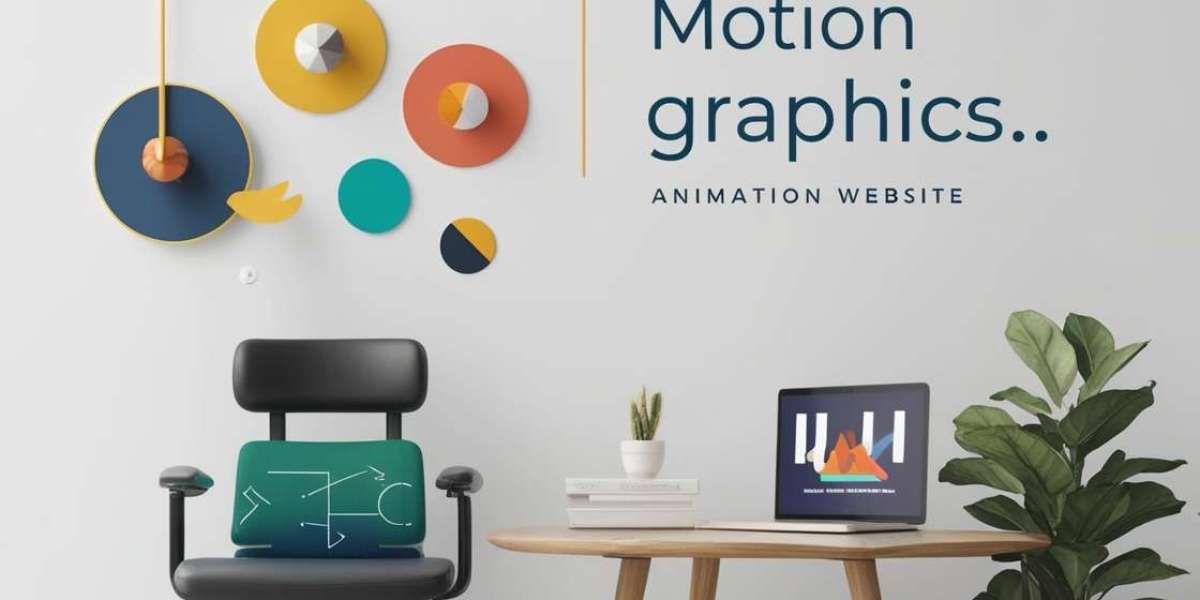Understanding the Basics of 2D Motion Graphics
Before diving into the intricate details of motion graphics creation, it’s crucial to understand what motion graphics are. Essentially, motion graphics involve the use of animation and visual effects to create the illusion of motion. Unlike traditional animation, which may involve character-driven narratives, 2D motion graphics focus primarily on graphic design elements such as shapes, text, and symbols.
The Role of a Motion Graphics Designer
A motion graphics designer is responsible for creating these engaging visuals. They combine graphic design skills with animation techniques to produce videos that capture attention and convey messages effectively. As a budding designer, you’ll want to develop a strong foundation in both design principles and animation techniques.
Why Learn 2D Motion Graphics?
Learning to create 2D motion graphics can offer numerous benefits:
Enhanced Creativity: Motion graphics encourage creativity, allowing you to explore various design styles and techniques.
Career Opportunities: With businesses increasingly relying on video content, expertise in motion graphics can open doors to various roles in marketing, advertising, and media production.
Effective Communication: Motion graphics can simplify complex ideas, making them more accessible and engaging to a broader audience.
Branding: Mastering motion graphics enables you to contribute to a brand's identity through compelling visual storytelling.
Now that we understand the importance of mastering 2D motion graphics creation, let's explore the steps to get started.
Step 1: Mastering Design Fundamentals
Before you can dive into motion graphics, it’s essential to have a solid understanding of design fundamentals. This includes principles such as:
- Color Theory: Understanding how colors interact and evoke emotions can significantly impact your designs.
- Typography: Choosing the right fonts and understanding their roles in communication is crucial for creating effective motion graphics.
- Composition: The arrangement of visual elements can guide the viewer's eye and enhance storytelling.
- Branding: Familiarize yourself with how colors, typography, and design elements work together to create a cohesive brand identity.
Recommended Resources:
- Books: "The Elements of User Experience" by Jesse James Garrett and "Don't Make Me Think" by Steve Krug.
- Online Courses: Websites like Skillshare, Udemy, or Coursera offer courses on graphic design fundamentals.
Step 2: Get Comfortable with Animation Software
To create 2D motion graphics, you’ll need to become proficient with animation software. Several tools are widely used in the industry, including:
Adobe After Effects: This is the industry standard for motion graphics and animation. It offers a wide range of features and capabilities that allow you to create intricate animations and effects.
Adobe Animate: This tool focuses more on traditional animation techniques and is great for creating animations that incorporate interactivity.
Blender: Although primarily known for 3D animation, Blender also has powerful tools for 2D motion graphics.
Toon Boom Harmony: Ideal for both 2D animation and motion graphics, it's used extensively in the animation industry.
Learning Resources:
- Official Tutorials: Most software comes with official documentation and tutorials that can help you get started.
- YouTube Channels: Channels like "Video Copilot" and "School of Motion" offer excellent tutorials on motion graphics.
Step 3: Learn the Art of Storyboarding
Storyboarding is a crucial step in the motion graphics and animation process. It allows you to plan out your animation visually and ensures a coherent flow of information. Here’s how to approach storyboarding:
Conceptualize Your Idea: Start by writing down the key messages you want to convey.
Sketch Your Frames: Create rough sketches of each frame or key scene in your animation. This doesn’t have to be detailed; simple stick figures and shapes will do.
Organize the Flow: Arrange your sketches in a sequence that tells a story. This helps visualize how each element interacts with one another.
Add Notes: Include notes about timing, movement, and transitions between scenes to clarify your vision.
Step 4: Begin Creating Your Motion Graphics
Now that you have a storyboard in place, it's time to start creating your 2D motion graphics. Here’s a simple workflow to follow:
1. Create Your Assets
Use your design software to create the graphic elements you'll need for your animation. This may include:
- Shapes
- Characters
- Text
- Backgrounds
2. Import Assets into Your Animation Software
Once your assets are ready, import them into your animation software (e.g., Adobe After Effects). Ensure they are organized in layers for easy manipulation.
3. Animate Your Assets
Begin animating your assets based on your storyboard. Consider the following techniques:
Keyframing: This technique allows you to define specific points in your animation where changes occur. The software will interpolate the movement between these points.
Ease In and Ease Out: These techniques smooth out the start and end of your animations, making them feel more natural.
Motion Paths: Create paths for your objects to follow, which can enhance the fluidity of your animations.
4. Add Effects and Transitions
Enhance your motion graphics by adding effects and transitions. Consider using:
- Opacity Changes: Fade elements in and out for smooth transitions.
- Motion Blur: This effect adds realism by simulating the blur that occurs when objects move quickly.
5. Incorporate Sound
Sound is an essential aspect of engaging motion graphics. Adding background music, sound effects, and voiceovers can significantly enhance your animation. Be sure to choose audio that complements your visuals and supports your message.
Step 5: Feedback and Revisions
Once your animation is complete, seek feedback from peers or mentors. Constructive criticism can help you identify areas for improvement and refine your work. After gathering feedback, make necessary revisions to ensure your animation meets your initial goals and resonates with your audience.
Step 6: Finalize and Share
After finalizing your animation, export it in the desired format based on where you intend to share it. Common formats include:
- MP4: Ideal for online sharing due to its small file size and wide compatibility.
- MOV: A higher-quality format suitable for professional presentations or film.
Finally, share your motion graphics across platforms, including social media, websites, and email newsletters. Consider how to optimize your content for each platform to maximize engagement.
Step 7: Continual Learning and Improvement
The field of motion graphics is constantly evolving, so it's vital to stay updated on industry trends and new techniques. Here are ways to continue your education:
Follow Industry Leaders: Stay connected with renowned motion designers and studios through social media and their blogs.
Participate in Online Communities: Join forums and groups where you can share your work, ask questions, and learn from others.
Attend Workshops and Conferences: Participate in events focused on animation and design to network with professionals and gain insights.
Conclusion
In conclusion, mastering 2D motion graphics creation requires a combination of design knowledge, software skills, and storytelling ability. By understanding the fundamentals of design, getting comfortable with animation software, and practicing your craft, you can create engaging motion graphics that captivate audiences.







